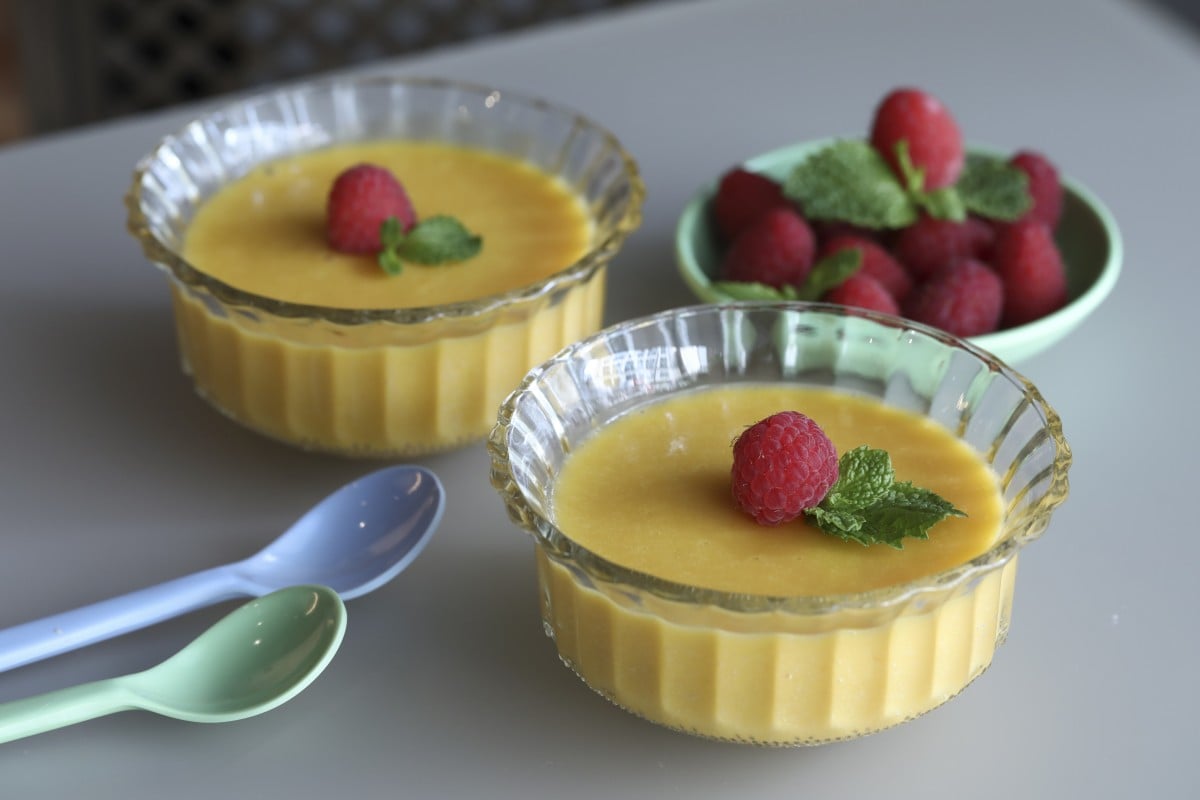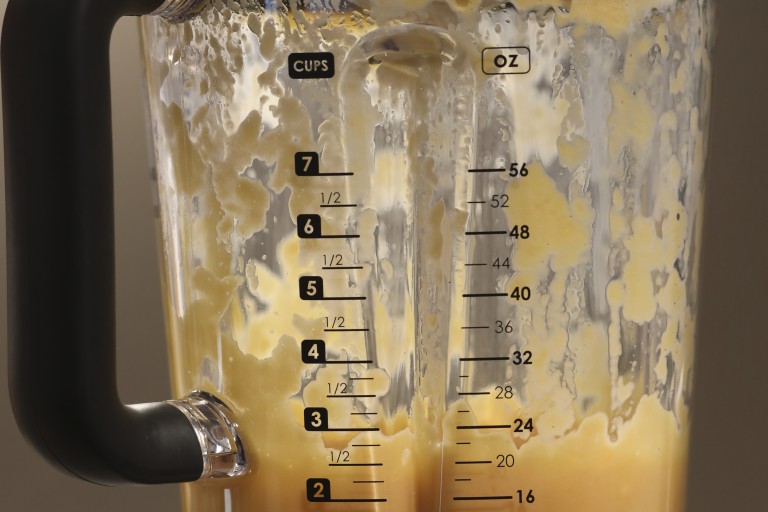
Almost everybody loves mango – and often they have strong preferences for the varieties they believe to be best. I like almost all mangoes as long as the flesh is juicy, sweet and smooth.
When checking for ripeness, you can’t rely only on your eyes. Some varieties turn mango-orange when ripe, others keep a greenish tinge.
It’s better to smell the mango for ripeness, then double check by pressing on it with your fingertips – the flesh should yield gently; it should not be hard or mushy.
After cutting open the mango, trim off and discard any flesh with dark spots, which might cause stomach ache.
This classic Cantonese dessert is so popular that it is even available in instant mixes; just add boiling water, stir, pour the mixture into bowls and refrigerate until set. The home-made version isn’t difficult, however, and you can really taste the difference if you use distinctively flavoured mangoes. Choose varieties that have smooth flesh without a lot of fibre.
It is hard to say exactly how many mangoes you’ll need to make these puddings as some varieties have a higher proportion of flesh to seed. I start with 800 grams (28 oz) of whole ripe mangoes, but have one or two spare, depending on size. And because mangoes vary in sweetness, it’s also difficult to say how much sugar you will require or whether you need to add any at all.
I like a pudding that is softly set, so use only four teaspoons of gelatin: when you spoon it up, the pudding should hold its shape but not be as firm as jelly. If you prefer a firmer set, use the larger amount of gelatin.
This recipe makes mango pudding that is quite creamy because it contains evaporated milk. For a lighter pudding, use half evaporated milk and half water.
Pour 70ml (1⁄4 cup and 2 tsp) of cool water into a rice bowl (or a bowl of similar size). Slowly sprinkle the gelatin powder over the surface of the water, letting each addition absorb water before adding more. If the powder stays on the surface without absorbing water, stir the mixture with a teaspoon, then continue to slowly sprinkle in the gelatin. Once it is all added, leave the bowl at room temperature while preparing the other ingredients.
Rinse the mangoes. Lay one mango on a cutting board and slice it from stem to stem, cutting down one side of the flattish seed in the centre. Turn it over so the cut side is down then slice along the other side of the seed. Scoop the flesh from the skin, and cut off and discard any dark spots.
Take the centre part of the mango, containing the seed, peel back the skin, then cut off the flesh. Weigh out 550 grams (19½ oz) of mango flesh and reserve any excess.

Put the 550 grams 19 ½ oz) of mango flesh in a food processor or blender. Add the evaporated and condensed milks and purée as smooth as possible.
For a really smooth pudding, strain the purée through a fine sieve placed over a bowl; if you’re not bothered about it being perfectly smooth, pour the mixture straight into the bowl from the food processor.
Taste the purée. If you would like it sweeter, add sugar to taste and whisk it in.
Pour 50ml (3 tbsp and 1 tsp) of very hot water into the bowl holding the gelatin and stir until it is dissolved.
Spoon about 60ml (1⁄4 cup) of the mango mixture into the gelatin and stir well. Pour this back into the larger bowl and stir slowly but thoroughly to combine, trying not to create any air bubbles.
Cut any excess mango flesh into small cubes and stir it into the mixture.
Divide the pudding between six bowls (preferably glass) that each hold about 120 grams (½ cup), taking care to distribute the mango pieces evenly. Make sure the mango cubes are submerged and the surface is smooth.
Cover with cling film, then chill overnight, or until set.
Just before serving, garnish the mango pudding with raspberries and mint leaves.